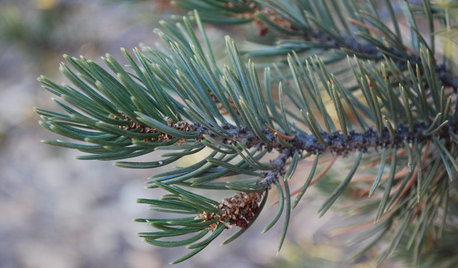ouch!
blutarski
14 years ago
Related Stories

COLORHow to Give Neutral Paint Colors a Subtle Jolt
Don’t compete with your neutral hues — complement them!
Full Story
REMODELING GUIDES6 Must-Know Lessons From a Serial Renovator
Get your remodel right the first time, with this insight from an architect who's been there too many times to count
Full Story
THE HARDWORKING HOME12 Smart Designs for Small-Space Living
The Hardworking Home: Furnish your compact rooms more efficiently with these creative built-ins and adjustable pieces
Full Story
DECORATING GUIDESKnot Again! Macrame Is Back
It's happened. A craft that typified 1970s style (the owls, the spider plants!) is back, but better
Full Story
EXTERIORS13 Dramatic Exterior Paint Makeovers by Houzzers
See real-life before and afters of home fronts transformed with paint, in wide-ranging colors and styles
Full Story
TREESGreat Design Plant: Pinyon Pine
You might just go nuts for this tough evergreen native to the Western U.S.
Full Story
GARDENING AND LANDSCAPINGTake a Winter Walk on the Safe Side
Learn how to handle snow, ice and other cold-weather landscape factors to minimize falls and damage
Full Story
KITCHEN DESIGNStylish New Kitchen, Shoestring Budget: See the Process Start to Finish
For less than $13,000 total — and in 34 days — a hardworking family builds a kitchen to be proud of
Full StoryMore Discussions











puglvr1
jonaskragebaer
Related Professionals
Palm Springs Landscape Architects & Landscape Designers · Maple Heights Landscape Architects & Landscape Designers · Bergenfield Landscape Contractors · Brookline Landscape Contractors · Lake Worth Landscape Contractors · Milford Mill Landscape Contractors · Sun City Center Landscape Contractors · Waltham Landscape Contractors · Goodlettsville General Contractors · Galena Park General Contractors · Bellingham General Contractors · South Windsor General Contractors · Tabernacle General Contractors · Fitchburg Carpenters · White Bear Lake Decks, Patios & Outdoor Enclosurescactusmcharris, interior BC Z4/5
paracelsus
blutarskiOriginal Author
ltecato
bunnygurl
blutarskiOriginal Author
greenman28 NorCal 7b/8a
cactusmcharris, interior BC Z4/5
blutarskiOriginal Author
beachplant
greenman28 NorCal 7b/8a
tjcarita
aztcqn
johnorange
tjcarita